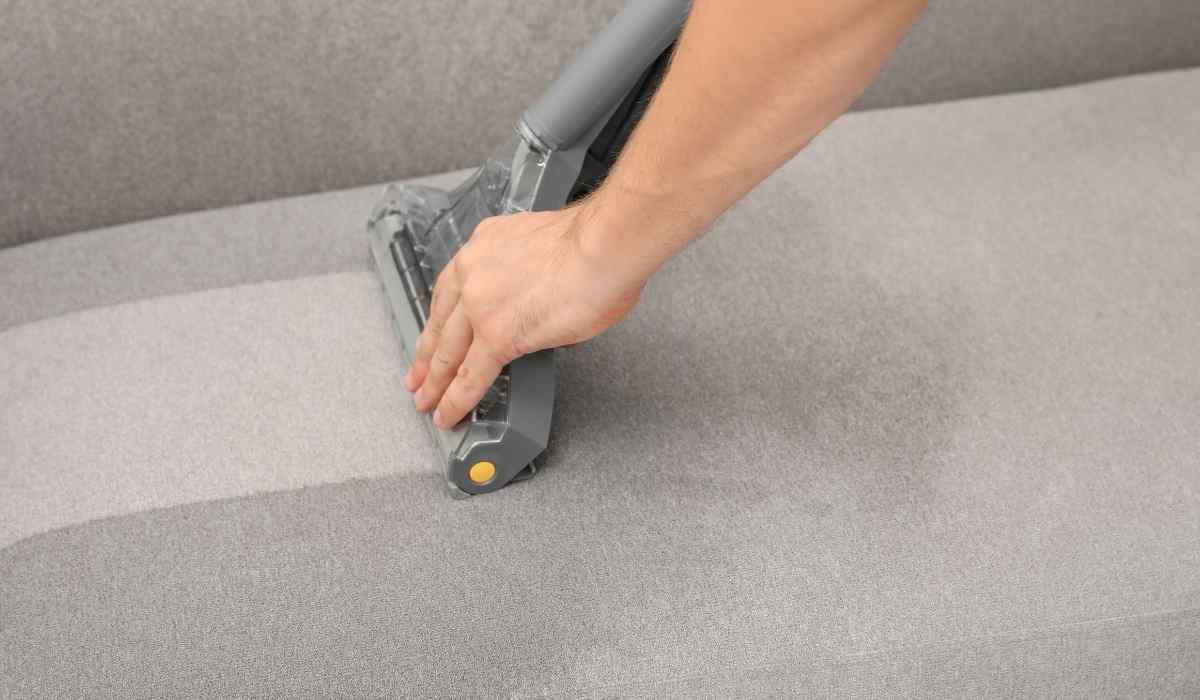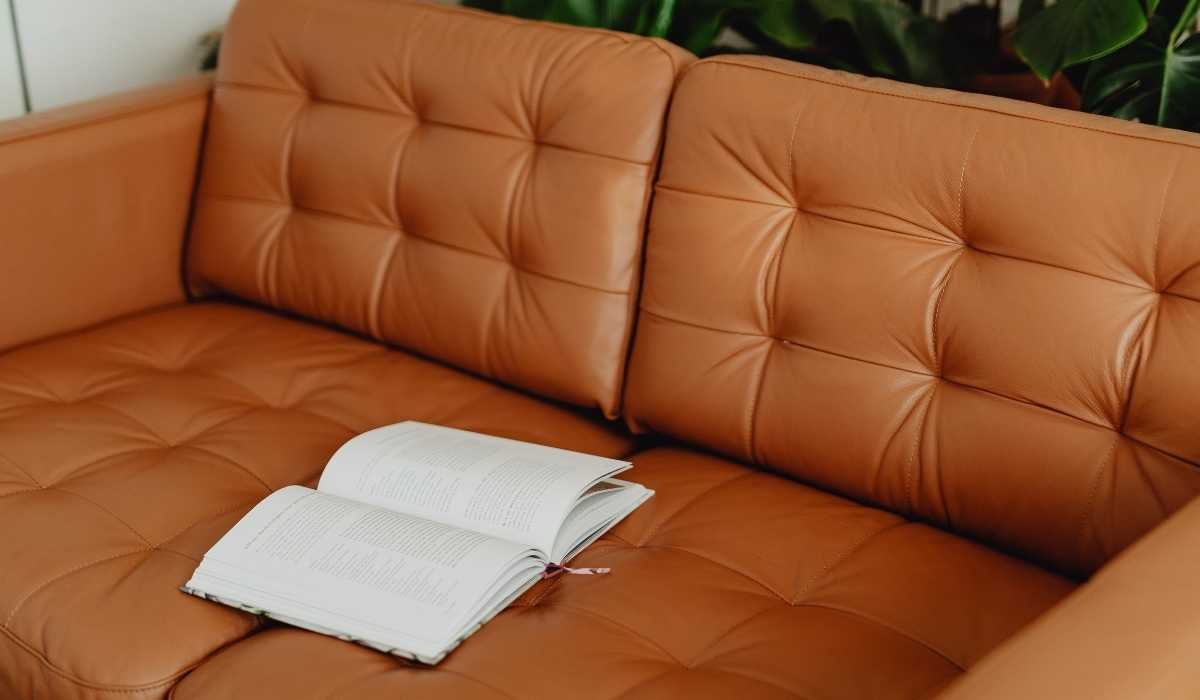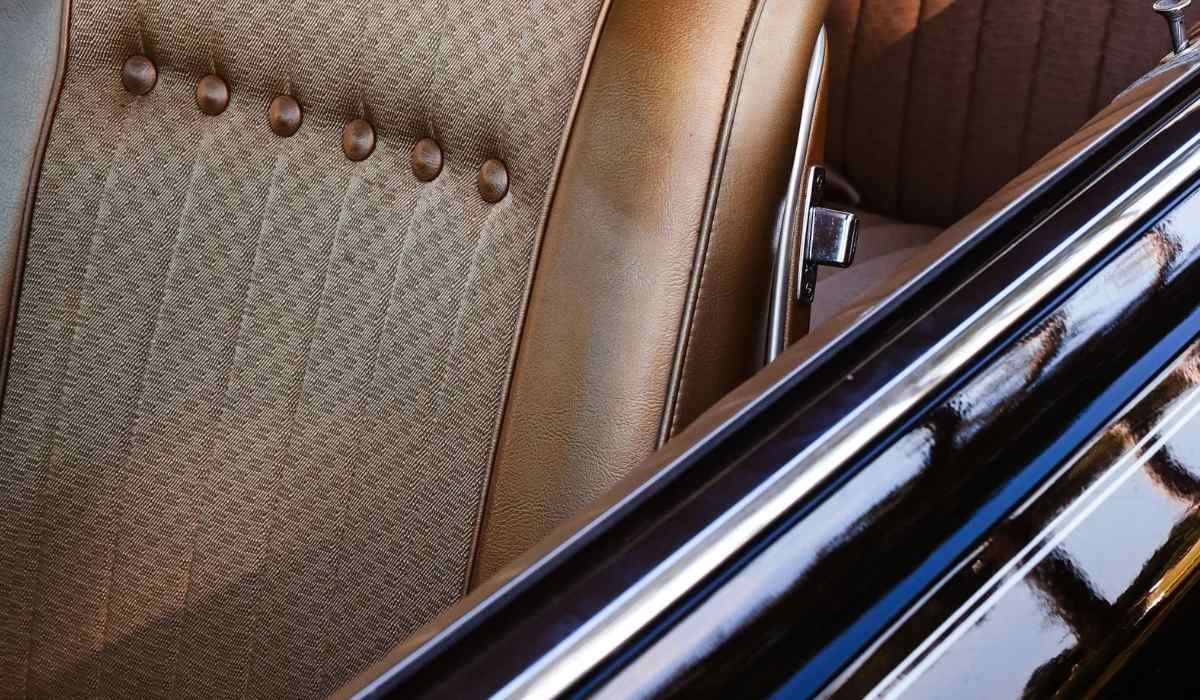Are you tired of stubborn stains and dull fabric on your furniture? Cleaning upholstery can feel like a tough task, but what if there was a simple, effective way to bring your sofas and chairs back to life?
You’ll discover the best way to clean upholstery that saves you time, protects your fabric, and leaves your home looking fresh. Keep reading to unlock easy tips and tricks that anyone can use—your furniture will thank you!
Table of contents
Choosing The Right Cleaner

Choosing the right cleaner is key to keeping upholstery fresh and lasting longer. Different fabrics need different care.
The wrong cleaner can damage the material or leave stains. Knowing your fabric type helps pick the best cleaning solution. This section breaks down fabric types, suitable cleaners, and the choice between homemade and commercial options.
Types Of Upholstery Fabrics
Upholstery comes in many fabric types. Common ones include cotton, linen, polyester, velvet, and leather. Each fabric reacts differently to cleaning methods. Cotton and linen are natural and absorb liquids easily.
Polyester and other synthetics resist stains better. Velvet needs gentle care to avoid crushing fibers. Leather requires special cleaners to keep it soft and prevent cracking. Identifying your fabric type guides your cleaner choice.
Cleaning Solutions For Different Materials
Use water-based cleaners for cotton and linen. Test on a small hidden spot first. For synthetic fabrics, mild detergents often work well. Velvet needs a soft brush and gentle cleaning agents.
Leather needs pH-balanced cleaners made for leather. Avoid soaking leather with water. Use a damp cloth and leather conditioner after cleaning. Always follow fabric care labels. Proper cleaners protect fabric and remove dirt safely.
Homemade Vs Commercial Cleaners
Homemade cleaners often use vinegar, baking soda, or mild soap. They are cost-effective and easy to make. These work well on many fabrics but may not suit delicate materials. Commercial cleaners are made for specific fabrics and stains. They usually have stronger formulas and clear instructions. Choose commercial products that match your upholstery type. Always spot test homemade or commercial cleaners to avoid damage.
You May Like: Clean Carpet And Sofa: Tips for a Spotless Home
Preparing Your Furniture
Preparing your furniture is the first step in cleaning upholstery well. It helps to avoid damage and makes cleaning easier. Taking time now saves effort later. Follow these simple steps to get your furniture ready for a deep clean.
Removing Loose Dirt And Debris
Start by removing loose dirt and dust from the surface. Use a vacuum cleaner with an upholstery attachment. Gently run it over cushions, arms, and backs. This clears dust that can spread during cleaning. Pay extra attention to seams and folds where dirt hides.
Testing Cleaners On Small Areas
Before using any cleaner, test it on a small hidden spot. This prevents damage or color fading. Apply a small amount and wait a few minutes. Check if the fabric changes color or texture. If safe, proceed with cleaning the whole area.
Protecting Surrounding Areas
Cover nearby floors and walls to avoid stains. Use old towels or plastic sheets around the furniture base. This keeps your room clean and makes cleanup simple. Protecting the area helps maintain your home’s appearance.
Spot Cleaning Techniques
Spot cleaning is a quick way to keep upholstery fresh and stain-free. It focuses on small areas, saving time and effort. Acting fast stops stains from setting deep into the fabric. Using the right methods helps protect the material and keeps it looking new longer.
Treating Stains Quickly
Start cleaning as soon as a stain appears. Fresh stains are easier to remove than old ones. Use a clean cloth to blot the spot gently. Avoid rubbing, which can spread the stain. Apply a small amount of mild cleaner or water to the cloth. Test the cleaner on a hidden area first to avoid damage.
Using Blotting And Dabbing Methods
Blotting lifts stains without pushing them deeper. Press the cloth softly on the stain. Dab from the outside toward the center. This prevents the stain from spreading. Replace the cloth when it becomes dirty. Keep blotting until the stain fades. Avoid scrubbing, which can harm the fabric fibers.
Avoiding Common Mistakes
Do not use too much water; it can cause watermarks. Avoid harsh chemicals that weaken fabric threads. Skip scrubbing hard; it may damage the upholstery. Never rub stains; it spreads them further. Always test cleaners on a hidden spot first. Use clean, white cloths to prevent color transfer.
Deep Cleaning Methods
Deep cleaning your upholstery removes dirt and stains that regular cleaning misses. It refreshes the fabric and extends the life of your furniture.
Choosing the right method depends on your upholstery type and the level of dirt. Here are three effective deep cleaning methods to consider.
Steam Cleaning Basics
Steam cleaning uses hot water vapor to clean fabric deeply. The steam loosens dirt and kills bacteria without soaking the fabric.
This method is safe for many materials but avoid it on delicate or water-sensitive fabrics. Use a steam cleaner with a fabric attachment for best results. Move slowly and evenly to clean all areas.
Using Upholstery Shampoo
Upholstery shampoo helps remove stains and grime from fabric surfaces. Apply the shampoo with a soft brush or sponge. Work it gently into the fabric, then let it sit for a few minutes.
Wipe off the shampoo with a clean, damp cloth. Allow the upholstery to dry completely before use. Test the shampoo on a hidden spot first.
Dry Cleaning Options
Dry cleaning uses special solvents instead of water to clean upholstery. It suits fabrics that can shrink or get damaged by water.
Professional dry cleaning removes tough stains and odors effectively. Some home dry cleaning kits are also available for light cleaning. Always follow the instructions to avoid damage.
Maintaining Upholstery Cleanliness
Keeping upholstery clean is key to a fresh and healthy home. Dirt and dust gather quickly on fabric surfaces. This can make furniture look old and worn out.
Clean upholstery lasts longer and feels nicer to sit on. Simple habits help maintain cleanliness and prevent deep stains.
Small efforts every week stop dirt from building up. This keeps fabrics bright and soft. Fresh upholstery also improves indoor air quality. Regular care saves money on costly cleaning or repairs. Follow easy steps to protect your furniture and enjoy a clean space.
Regular Vacuuming Tips
Vacuum upholstery often to remove dust and crumbs. Use a soft brush attachment to avoid damage. Move the vacuum slowly over all fabric areas. Pay special attention to crevices and seams. Vacuuming stops dirt from settling deep in fibers. Do this at least once a week for best results.
Protective Covers And Treatments
Use protective covers to shield upholstery from spills. Covers are easy to remove and clean. Choose covers that fit well and match your decor. Fabric treatments can help repel stains and water. Test treatments on a small area first. These steps guard against stains and keep fabric looking new.
Dealing With Odors
Odors can make upholstery unpleasant. Sprinkle baking soda on fabric and leave it for 15 minutes. Vacuum the baking soda thoroughly to remove smells. Fresh air helps reduce odors—open windows when possible. Avoid harsh chemicals, which can damage fabric or cause allergies. Use mild, fabric-safe sprays to refresh smells gently.
You May Like: 5 Best Way to Clean a White Couch
When To Call Professionals
Knowing when to call professionals for upholstery cleaning can save your furniture. Some stains and dirt need expert care. Professionals use special tools and cleaners. They can remove deep stains and allergens. This keeps your upholstery fresh and safe.
Signs Your Upholstery Needs Expert Care
Persistent stains that do not go away. Strong odors coming from the fabric. Fabric looks worn or faded unevenly. Dust and dirt build-up that regular cleaning misses. Allergies worsen after sitting on the furniture. Mold or mildew spots appear on the upholstery.
Choosing A Reliable Cleaning Service
Check reviews from past customers. Confirm the company uses safe cleaning products. Ask if they handle your type of fabric. Look for certification and professional training. Ensure they offer a satisfaction guarantee. Compare services and equipment used for cleaning.
Cost Considerations
Professional cleaning may cost more upfront. It can extend the life of your furniture. Avoid damage from using wrong cleaning methods. Some services charge by size or stain level. Request a clear, written estimate. Think of it as an investment in quality care.
Frequently Asked Questions
How Often Should I Clean My Upholstery?
Cleaning every 6 to 12 months keeps upholstery fresh and free from dust and stains.
What Is The Safest Way To Clean Upholstery At Home?
Use mild soap and warm water with a soft cloth for gentle, safe cleaning.
Can I Use Vinegar To Clean Upholstery?
Yes, vinegar diluted with water removes odors and light stains effectively.
How Do I Remove Tough Stains From Upholstery?
Blot stains quickly, then use upholstery cleaner or a vinegar-water mix gently.
Is Steam Cleaning Good For Upholstery?
Steam cleaning kills germs and removes dirt but check fabric care tags first.
Final Verdict
Cleaning upholstery well keeps your furniture fresh and lasts longer. Use gentle methods and the right products for best results. Always test cleaners on a small spot first. Regular cleaning removes dust and stains easily. A clean sofa or chair makes your home look nice and feel cozy.
Stick to simple steps for safe and effective cleaning. Your efforts will protect your investment and keep your space welcoming. Small actions today prevent big problems tomorrow. Clean upholstery means a healthier, happier living space.




Leave a Reply